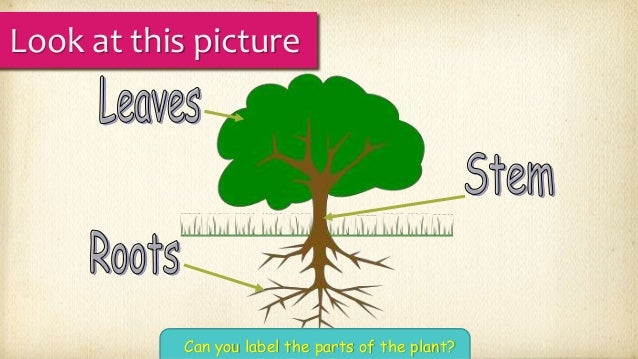44 label parts of the sun
Parts Of The Sun Worksheets & Teaching Resources | TpT 1. $3.00. PDF. Sun Nomenclature Cards (Red) - Includes the following parts of the sun: sun, core, radiative zone, convection zone, photosphere, chromosphere, and corona. All parts of the sun are shown in red.Includes:7 cards with labels7 cards without labels7 labelsblackline masterCards with labels are approx. 3¾. PDF Parts of the Sun - Montana From the center out, the layers of the sun are as follows: the solar interior which is composed of the core, the radiative zone and the convective zone. The visible surface is made up of the photosphere and the chromosphere. The outermost layer is called the corona. In this lesson, students will learn about the sun, our closest star. Guidelines 1.
Layers of the Sun | NASA The inner layers are the Core, Radiative Zone and Convection Zone. The outer layers are the Photosphere, the Chromosphere, the Transition Region and the Corona. IRIS will focus its investigation on the Chromosphere and Transition Region. More detail on the outer layers follows:

Label parts of the sun
Layers of the Sun | Parts of the Sun | DK Find Out The structure of the sun is made up of four layers. At the very center is the dense, hot core. Around the core lie two layers: a thick layer called the radiative zone and a thinner, cooler layer called the convective zone. Surrounding all of them is the sun's surface layer, known as the photosphere. DOC Loudoun County Public Schools / Overview The inner layer of the sun's atmosphere, and also the part that we see is called the PHOTOSPHERE 13. The RADIATIVE ZONE is the thickest layer of the sun. 14. Huge fiery arms or loops extending from the sun's surface are called SOLAR PROMINENCES 15.FUSION is the combining of a lighter elements to form a heavier element. True/False 16. Identify the parts of the Sun labeled A, B, C, D, and E. Label A 11/17/2020 Biology High School answered Identify the parts of the Sun labeled A, B, C, D, and E. Label A Label B Label C Label D Label E Advertisement Answer 4.1 /5 11 368esc07 Layer A- CORE Layer B- RADIATIVE ZONE layer C- CONVECTIVE ZONE Layer D- PHOTOSPHERE Layer E- CHROMOSPHERE Still stuck? Get 1-on-1 help from an expert tutor now.
Label parts of the sun. Layers of the Sun (With Labels) - Solar System From the inside out, the solar interior consists of the core, the radiative zone, and the convection zone. The solar atmosphere is made up of the photosphere, the chromosphere, a transition region, and the corona. Beyond the corona is the solar wind, which is actually an outward flow of coronal gas. Earth-Sun Relationships | National Geographic Society Any circle drawn around the Earth divides it into two equal halves called hemispheres. There are generally considered to be four hemispheres: Northern, Southern, Eastern, and Western. Grades 6 - 12+ Encyclopedic Entry 321 Earth Physical Geography, Geology, Geography, Earth Science, Astronomy The Sun | Earth Science | | Course Hero - Lumen Learning Lesson Summary. The mass of the Sun is 99.8% of the mass of our solar system. The Sun is mostly made of hydrogen with smaller amounts of helium in the form of plasma. The main part of the Sun has three layers: the core, radiative zone, and convection zone. The Sun's atmosphere also has three layers: the photosphere, the chromosphere, and the ... Anatomy of the Sun Diagram | Quizlet Chromosphere. It is a reddish gaseous layer immediately above the photosphere of the sun or another star. Together with the corona, it constitutes the star's outer atmosphere. Corona. It is the rarefied gaseous envelope of the sun and other stars. The sun's corona is normally visible only during a total solar eclipse when it is seen as an ...
PDF The Structure of the Sun - European Space Agency The different layers of the Sun The Sun, like other stars, is a huge spherical object made of hydrogen and helium. Its diameter reaches 1.400.000 km, or 109 times the Earth's diameter; but is 4 times less dense than the Earth due to its composition. The Sun is not only made of the glowing gas that we see with a telescope. It has, exactly PDF The Sun Worksheet - Northland Preparatory Academy a. the layer of the sun's atmosphere that gives off visible light b. the layer of the sun's atmosphere that has a reddish glow c. the layer of the sun's atmosphere that looks like a halo during an eclipse d. areas of gas on the sun's surface that are cooler than the gases around them e. reddish loops of gas that link parts of sunspot ... Parts of the Sun Flashcards | Quizlet Photosphere. Lowest layer of the Sun's atmosphere; gives off light and has temperatures of about 6,000K. Chromosphere. Layer of the Sun's atmosphere above the photosphere. Prominence. Links different parts of the sun spot regions together. Corona. Layer of the Sun that is only visible during a solar eclipse. Layers of the Sun - The Sun Today with Dr. C. Alex Young The Sun, as shown by the illustration to the left, can be divided into six layers. From the center out, the layers of the Sun are as follows: the solar interior composed of the core (which occupies the innermost quarter or so of the Sun's radius),; the radiative zone, ; and the convective zone,; then there is the visible surface known as the photosphere,
"Parts" of the Sun | Center for Science Education There are three main parts to the Sun's interior: the core, the radiative zone, and the convective zone. The core is at the center. It the hottest region, where the nuclear fusion reactions that power the Sun occur. Moving outward, next comes the radiative (or radiation) zone. Labelling the Sun For the exercise below, identify each of the parts of ... Labelling the Sun For the exercise below, identify each of the parts of the Sun and what they do (for example, what it is or what happens there). Some are regions (for example, #1), and some are particular items you'd see on the Sun (for example, #9). Your answers to the "What it is, or what it does" should be clear and in complete sentences Regions and Features of the Sun | Center for Science Education Regions and Features of the Sun. The main regions of the Sun include its interior, surface (photosphere), and atmosphere. Planets such as Earth have regions with specific traits - places like continents, oceans, and polar ice caps. The Sun also has regions, but of a very different nature. Many temporary features and phenomena, somewhat akin to ... The Sun - Imagine the Universe! The Sun contains about 92% hydrogen and 8% helium, with just a tiny bit of the other common elements we find on Earth. Compare that to Earth, where the most common elements are oxygen, magnesium, silicon, and iron. On Earth, hydrogen barely makes the top 10 list of common elements, and helium is extremely rare.
🌎A cross-section of the sun with labels A through E. A: center. B ... A cross-section of the sun with labels A through E. A: center. B: layer outside the center. C: next layer, above B. D: outermost layer. E: glowing rays - 27205838
Layers of the Sun Facts, Worksheets & The Sun For Kids - KidsKonnect The Sun is the largest object in our solar system. It is composed of seven layers: three inner layers and four outer layers. The inner layers are the core, the radiative zone and the convection zone, while the outer layers are the photosphere, the chromosphere, the transition region and the corona.
PDF Label the Planets in Our Solar System (*Include the Dwarf Planet) Label the Planets in Our Solar System (*Include the Dwarf Planet) ©Sheri Amsel * Color the Planets in Our Solar System ©Sheri Amsel Venus Mars Jupiter Saturn Earth Uranus Neptune Pluto Sun Mercury. 00 0 . Created Date:
Science worksheets: Label parts of the Sun | Science worksheets ... Description Science worksheet: Label parts of the Sun Students have to label parts of the Sun by looking at the numbers and where the arrow points (Core, Corona, Radiation Zone, Convection Zone,Photospere,Chromosphere) Answer Key included on 2nd page. Teachers Pay Teachers. 2M followers
What Are The Layers Of The Sun? - WorldAtlas The layers of the Sun are divided into two larger groups, the outer and the inner layers. The outer layers are the Corona, the Transition Region, the Chromosphere, and the Photosphere, while the inner layers are the Core, the Radiative Zone, and the Convection Zone. The Outer Layers Corona Transition region Chromosphere Photosphere
Anatomy of the Sun | NASA The Chromosphere - This relatively thin layer of the Sun is sculpted by magnetic field lines that restrain the electrically charged solar plasma. Occasionally larger plasma features, called prominences, form and extend far into the very tenuous and hot corona, sometimes ejecting material away from the Sun.
PDF The Structure of the Sun - Space Weather Prediction Center The Sun's rotation rate differs according to latitude: as seen from the Earth, the equatorial region rotates with a period of about 27 days, while the rotational period closer to the poles is about 32 days (Table 2-1). _____ * The Sun's rotational period as observed from Earth is known as the synodic period . Because the Earth moves about
Layers of the Sun | Science Facts From the Earth, the sun looks rather small. In reality, the diameter of the sun is around 860,000 miles. The Earth can fit around the sun 109 times. It is the closest star to the earth with a distance of 93 million miles. The sun is made of several complex layers, each with its own unique job that ultimately produces energy.
Structure of the Sun Anatomy & Diagram - Study.com There are three inner layers of the Sun. These are: The core The radiative zone The convective zone The core of the Sun is the area that extends from the center of the Sun to approximately 138,000...




Post a Comment for "44 label parts of the sun"